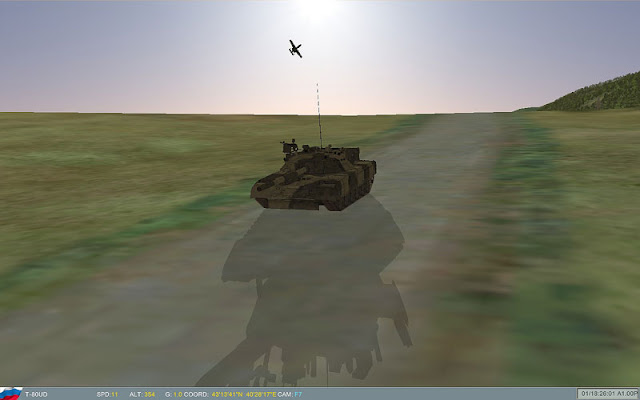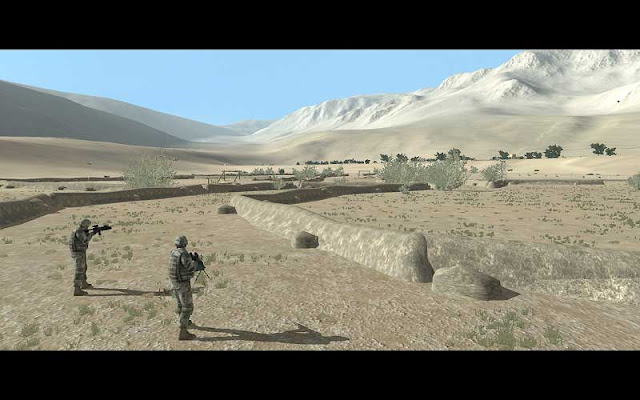Soon after take off, we get painted by the one of the SA-11s. They should be in the far background.
Navigation. The Caucasus looks all the same from altitude. Rivers played a big role in our navigation.
En route, somewhere between WP2 and WP3. Note the tight space we are in.
At the contact point (CP), waiting for the ground team to contact and clear us. In real life, these CPs may hold you for a long time, so you better trim your aircraft for fuel efficiency. I checked my fuel consumption and concluded that I could do this for 1.5 hours if needed. CPs around mountains like this may not be a good idea in real life (communications with ground controllers will be a tad difficult).
Once cleared hot, we zoom through the IP. The Death Canyon can be seen here. The SA-11 at the gate of this canyon painted us briefly while we sought refuge on the slopes ahead.
Deep breath nearing WP6. Last glance at ECM, weapons and targeting systems.
The moment of truth. At WP6, we emerge from the mountains and get a panoramic view of the enemy interior lines.
A few seconds later, during our attack run on the SA-11 in the valley (between the urban are and the river). One AGM-65D Maverick launched. No SAMs launched at us, thank goodness ...
This screenshot was made with a replay file, because off course at this point we were breaking hard from our attack run. The SA-11 in the valley goes up in flames.
With the SA-11 in the valley gone, we confidently align for an attack run on the tanks. We get a not-so-friendly reminder form the SA-11 in the coast line about keeping our altitude on check. The missile looses track and self-destructs over the woods.
We move through the valley with the hills on our right covering us from the other SA-11 in the coast line. Is a tight space, but the A-10 can turn on a dime.
Acquiring targets with low altitude pop ups is challenging and we overshot the tanks during our first pass. They shot at us con gusto, but our serious error didn't have any consequences.
My second AGM-65D finds its target on the first tank. Note how we are breaking too close to the target.
My third AGM-65D misses! Again, we are breaking too close to the enemy.
My fourth AGM-65D. Only one tank left.
I order my wingman to engage the tanks with his missiles, and artificial stupidity kicks in afterburner. He aligns for a text book attack run from high altitude and gets fired at by the SA-11 in the coast line.
No chute, my wingman is dead (explosion in the left).
I then attack the only tank left with all I have at this point, the gun ...
Multiple passes, no results. In this image, a gentle slope made it impossible to put the tank into my sights. Low altitude gun runs suck ...
Another failed gun run with a shallow angle. I just can't pop up because of the SA-11 on my right. Flying over the target is not a good idea either.
I even tried changing the direction of the gun run. After some hits, the T-80 proved to be a tough nut to crack. Now he is getting too close to the front lines. With my guns dry, I RTB.
Landing at the forward base Sukhumi. Not a good day for our wing. A worse night for the troopers on the ground ...
Cheers,



































